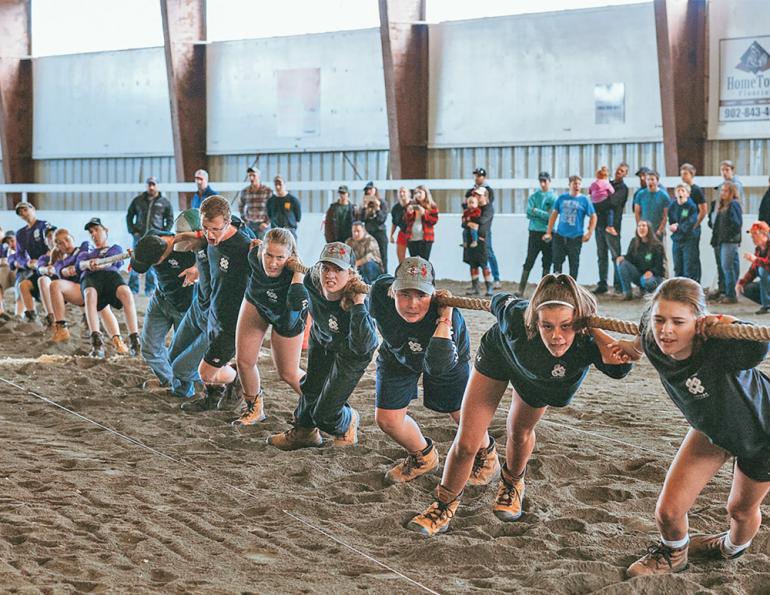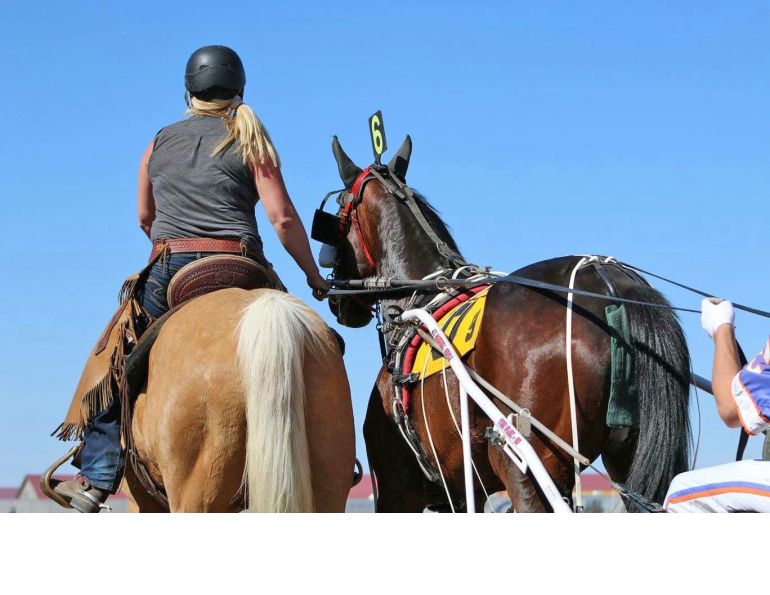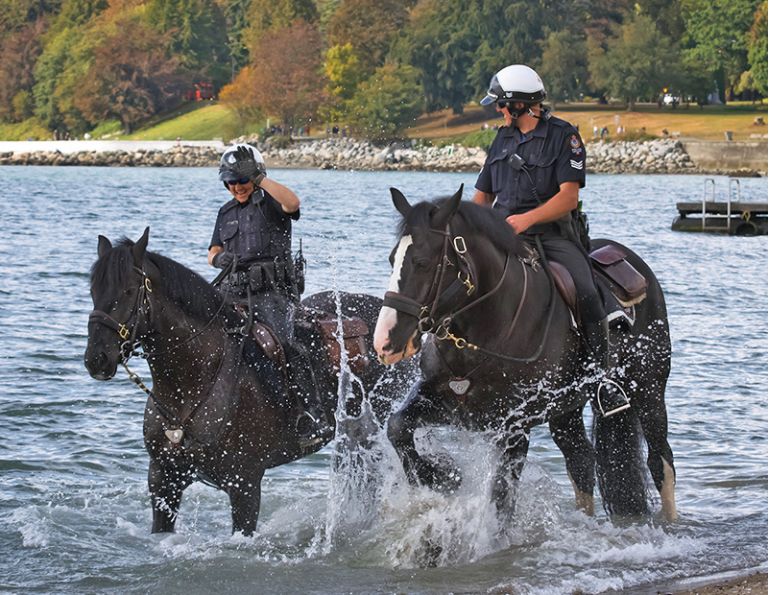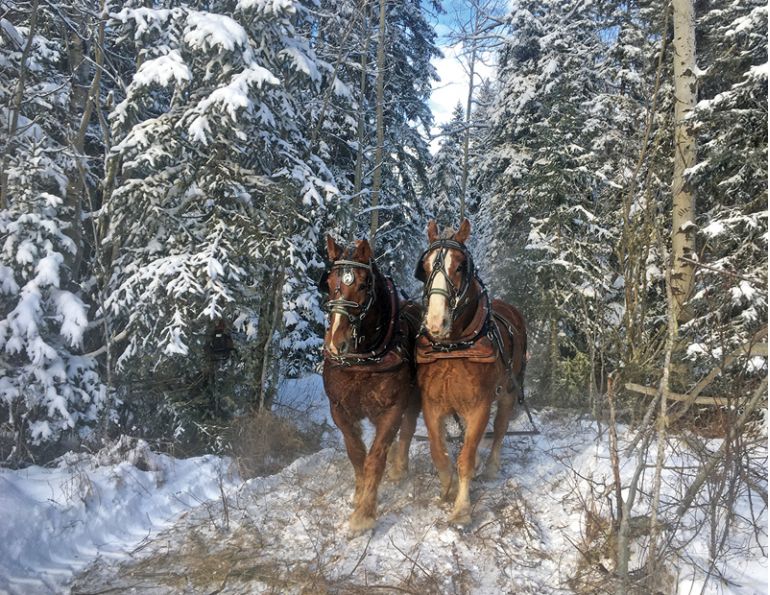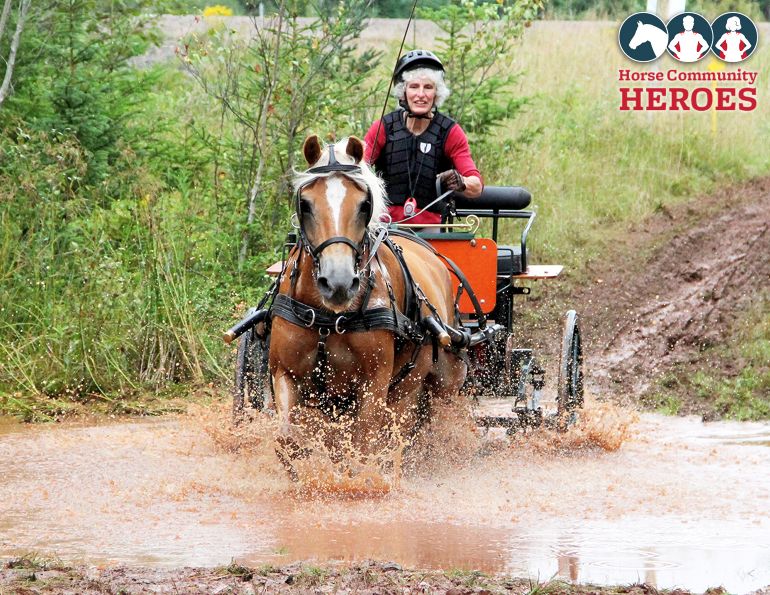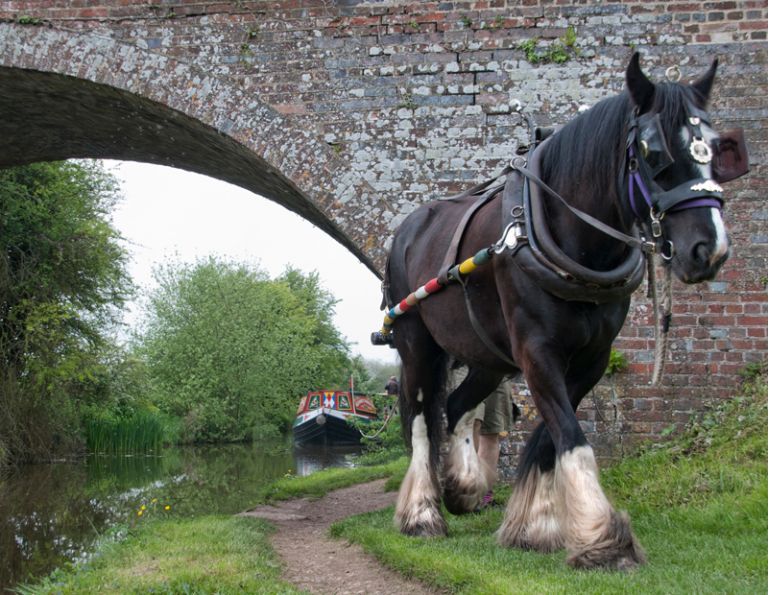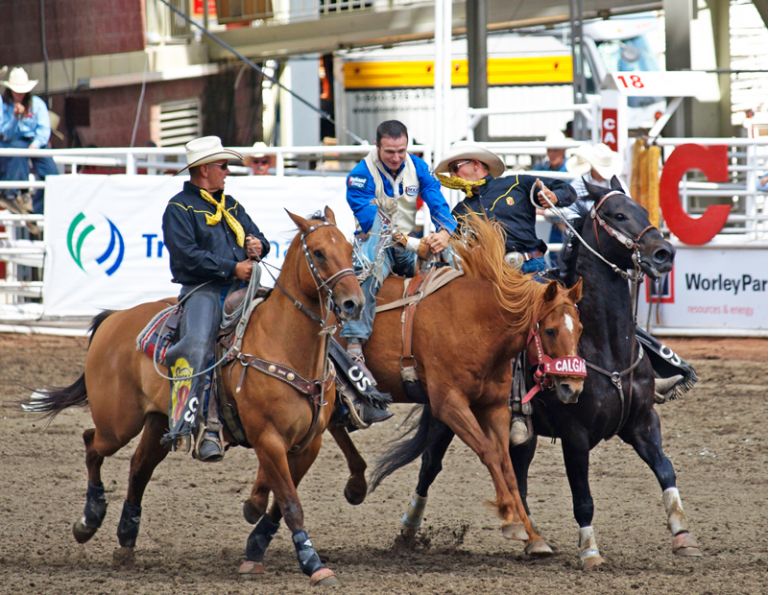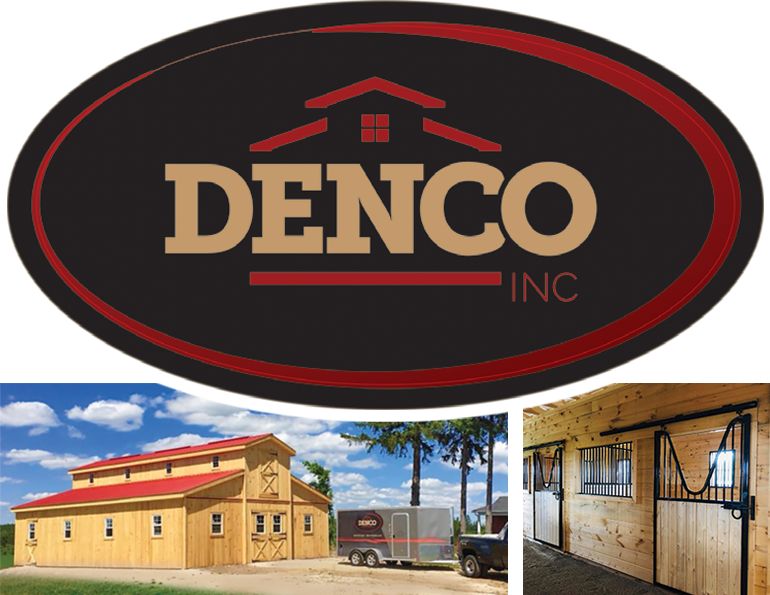By Margaret Evans
For over 100 years, 4-H Canada has been one of the most highly respected and widely known youth organizations in the country, offering activities and projects to nurture members’ talents and abilities, and developing leaders who impact their communities. Its core values embodied in its pledge define the profile of 4-H at every level.
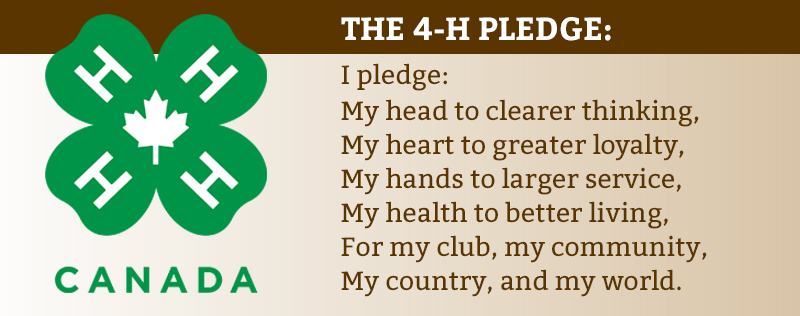
At the national level, 4-H Canada (previously known as the Canadian 4-H Council) was created in 1933 to represent the 4-H movement. It is run by a volunteer board of directors who oversee the organization’s strategic direction.
Age levels for membership in 4-H vary from province to province. Nationally, it is recognized as being from ages nine to twenty-five, while in many provinces the age range is from nine to twenty-one. In addition, some provinces offer the Cloverbud program for children from six to eight years of age. Young members enjoy hands-on activities and can choose projects from a wide variety of topics ranging from agriculture to crafts, life skills, and science. Cloverbud programs are non-competitive and designed to foster a young child’s curiosity about the world around them.
The 4-H activities are all about projects that each member freely chooses and, as of January 1, 2020, there were 41,773 ongoing projects. They are topics each member is passionate about and typically the completion of the project takes the entire year, but can be longer. Projects are organized within the four leadership development pillars: sustainable agriculture and food security, community engagement and communication, environment and healthy living, and science and technology. And, of course, projects can be focused on horses.
4-H began as a simple creation at the rural level. It was 1913, just a year before the outbreak of World War I. Manitoba was a young, growing province with much of its economy based on agriculture. To encourage children to develop skills raising stock and growing produce, the Department of Agriculture, through the Extension Department of the University of Manitoba, organized eight Boys and Girls Clubs.
The first community to launch a club was Roland in the Pembina River Valley, located 100 kilometres southwest of Winnipeg. It was a perfect place for children living on farms and in rural areas to show their skills. With its rich fertile soil, farmers in the Roland area continue to produce a variety of cereal grains, corn, sunflowers, and beans.
The concept of a Boys and Girls Club caught on and the other communities in Manitoba that were part of the launch that year were Darlingford, Manitou, Neepawa, Oak Lake, Starbuck, Stonewall, and Warren.
The Department gave each member one dozen eggs from a good breed of laying hens, and some quality seed of fodder corn and seed potatoes. Each member set the eggs under a hen in the spring and planted the seeds in a corner of a field or in a garden. They tended to the chickens and crops throughout the summer. Then, in the fall, the communities held a fair where the chickens and the produce were judged.
The concept of a club for children and youth had already begun in 1901 in the United States where it was called 4-H, representing head, heart, hands, and health. The origin of the four-leaf clover emblem identifying the 4-H organization is credited to Oscar Herman Benson (1875-1951) of Wright County, Iowa, who awarded clover pennants and pins to students’ agricultural and domestic science exhibits at school fairs.

4-H boys with their prize heifers at a 4-H Club Fair at Charleston, West Virginia, in October 1921. Photo: Wikimedia/Lewis Hines

Enthusiastic New Brunswick 4-H club members Joyce Wilkins (right) and her sister Sharon give their Holstein calf the best of care and intend to make a good showing at the local exhibition(circa 1930-1960). Photo: Library and Archives Canada, no. accession 1972-047.
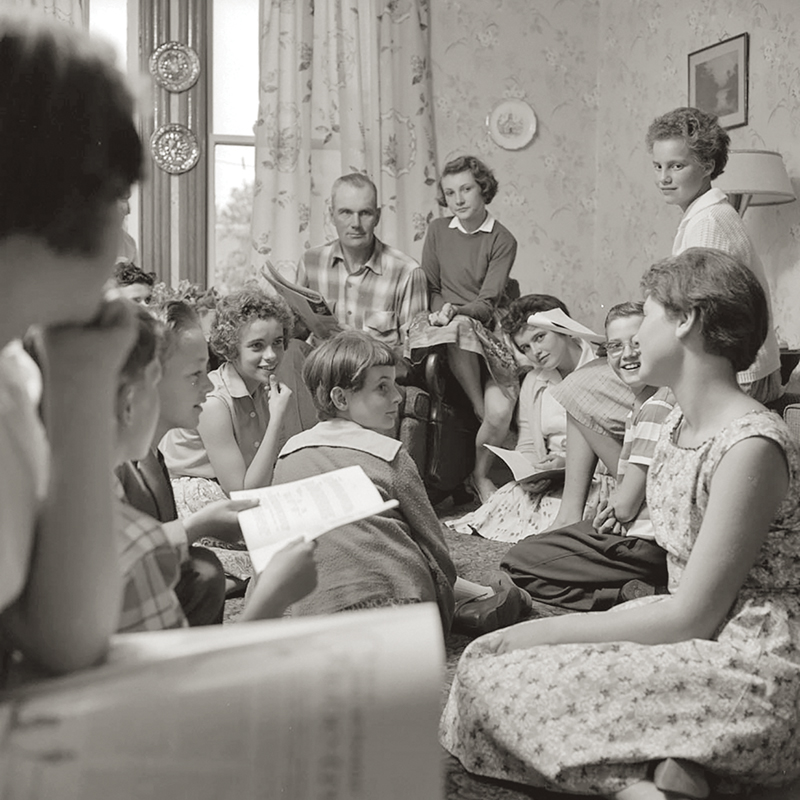
A social gathering of a 4-H club in Canada in 1961. Photo: Library and Archives Canada/National Film Board fonds/e011177476
Since then, 4-H has honoured its rich grass roots while striving to keep pace with contemporary times.
“If you look when 4-H got started, it was pre-war,” says Shelagh Niblock, a 4-H leader from 2002 to 2010 after her daughter joined in 2001. “These were rural, farming communities. It mostly started with farm animal clubs, then we had mixed clubs, then we started getting horse clubs, and horses became a real social pastime and more young people got into horses. It grew from there.
“I think at that time it was a much more relaxed environment,” she says. “It was a good social environment for children and mothers. Most mothers were in the home so it was a social outing for them. It got the kids out and it gave them a structure and framework for having a horse.”
Niblock still volunteers regularly to judge Achievement Days, Rider Evaluations to establish rider placements at the beginning of the club year, and events such as public speaking, demos, and judging rally.
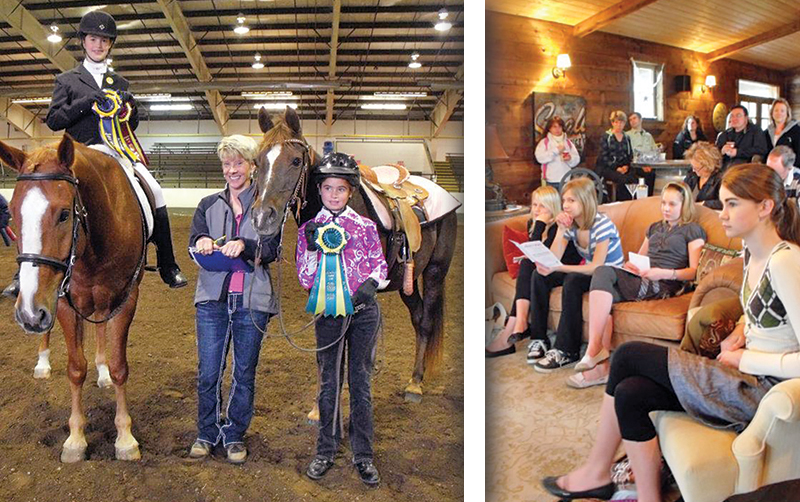
Shelagh Niblock (standing between horses, above) describes 4-H as a social, personal growth program that is fantastic for youth regardless of their goals and endeavours. Photos courtesy of Shelagh Niblock
Many people still think of 4-H primarily as an agricultural organization with an equestrian component. But it is far greater than that and, while other non-profit equestrian organizations are seeing drops in membership, 4-H has kept pace with the times and has become among the biggest youth organizations in the world, with some impressive statistics.
“Right now, we have between 24,000 and 25,000 members, [1,982 clubs, 7,600 volunteers and over 350,000 alumni],” says Shannon Benner, CEO, 4-H Canada in Ottawa. “It fluctuates a little depending on the time of year. Club years vary a little bit. There are about 3,500 members in equestrian. We have seven million members worldwide across 70 countries. Just five years ago we started a global board to coordinate a network at a global level. We spread country to country, and program by program. Some of the expansion was spread through having armed forces, departments of agriculture, departments of education, and through universities.”
Benner says that, in the western US there is a lot of equestrian programming, but young people in the US are also heavily engaged in branches of STEM (science, technology, engineering and math). In African countries members are involved in a lot of agriculture, as well as entrepreneurship and starting their own businesses. Projects often vary according to cultures.
“In Canada, there are no two provinces that have the same programming mix,” she says. “But the bigger principles are the same everywhere. Members will become strong, confident leaders and have a positive impact on their community. 4-H is known for its focus on leadership and that progress is accomplished by each member’s project, regardless whether they are working on equestrian or dairy or art. We are helping young people succeed and be successful post-secondary in a career stream. That is always the common thread.”
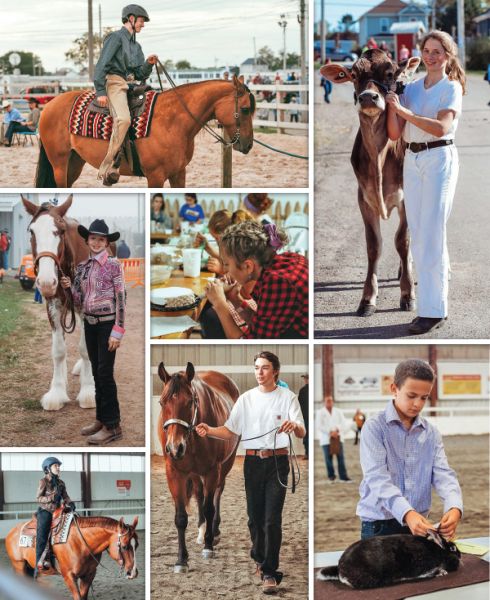
Regardless of the project, the primary goal of 4-H is to provide youth with life skills and personal growth opportunities, to help them become strong, confident leaders who will make a positive impact on their communities. These 4-H members are at a Provincial Show in Nova Scotia. Photos courtesy of Angela Masters
The heart of any project is driven by the 4-H motto Learn to do by doing. Each member decides their own challenge, then works at that project to completion.
“4-H is more of a social, personal growth program. That is the plus of 4-H,” says Niblock. “It encourages public speaking. You have to keep a record book of all your activities and all you did for your project.”
In Manitoba, membership in 2018-2019 was 2,003 with 18 percent engaged in equestrian activities. Sustainable agricultural projects make up 57 percent of all projects taken, with beef and equine projects the most utilized.
“English, Western and Gymkhana are some of our main disciplines practiced at club level,” says Candace Tolton, President of 4-H Manitoba. “Most clubs offer clinics throughout the year focused on more than one discipline to allow members the extra opportunities. Several clubs have open Fun Ride days where they can ride with members of different clubs. We also have some clubs that try new things such as roping or team sorting. There is a project for all interests, besides the offered project books. Members also have the opportunity to design their own project.”
In the equestrian program, Benner says the biggest ones are Light Horse and Young Horse. “The Light Horse is really taking off in western Canada and Nova Scotia. Light Horse is an evolution of the horse program. It’s more manageable for younger ages from a risk management perspective. Many young girls are engaged in the program. Miniature horses are also really growing in Nova Scotia and they are mainly used for driving.”
Nova Scotia has 2,500 members with 14 percent (350) of members engaged in equestrian activities. They include Light Horse (English and Western), Light Horse basics (for members with a horse who want to learn basic care), Miniature Horse, and Draft Horse. Light Horse is among the top three livestock projects, along with Dairy and Rabbit.
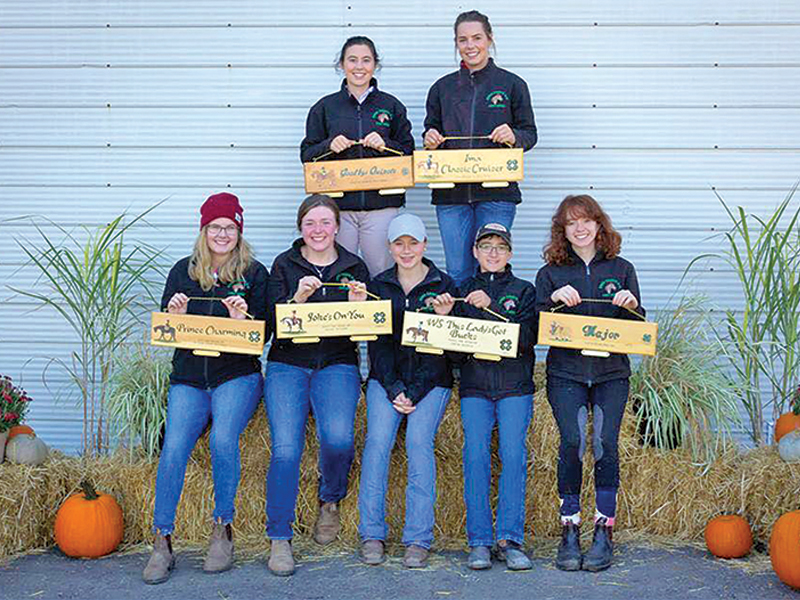
The Kings County Light Horse Team at a provincial show in Bridgewater, NS. Photo courtesy of Nicole Martin
“Top Life Skills projects are Crafts, Foods, and Photography,” says Angela Masters, Volunteer Services Lead, 4-H Nova Scotia. “All members participate in public speaking, judging, and Achievement Days annually. Additionally, members can participate in Camp Rankin, local exhibitions, and the Nova Scotia Provincial 4-H Show.”
Camp Rankin week-long camps are a co-ed residential camp. The camp facilities were built on 60 acres of land at Cape George in Richmond County, Nova Scotia, in 1972. It was the first 4-H camp in the Atlantic provinces, and members enjoy a wide range of activities.
Masters says that, given that a primary goal of 4-H is to provide youth with life skills, they offer many new projects to reflect the changing needs of employers and interests of members.
“Skills such as time management, record-keeping, communication, teamwork, mentorship, and self-confidence are developed due to the hands-on approach as members learn through the Learn to do by doing model of experiential learning, which carries through no matter what project is chosen.”
4-H Nova Scotia offers project opportunities from all four core pillars. “Throughout Nova Scotia, the membership is allowed the opportunity to diversify into aspects that they may not have seen before,” says Nicole Martin, 4-H Ambassador. “They are able to do English — Equitation, Pleasure, Hunter Hack, Road Hack, and Dressage — being able to choose any or all of these classes. And you can do Western – Horsemanship, Pleasure, Trail, Reining, and Gymkhana. This allows members to try something new or be able to show the skills they have and that their horse excels in.”
The focus on the 4-H equestrian program is perhaps a little different from other equestrian organizations. The intent is not so much about competition, although it is part of the journey, as it is about riders finding their confidence, leadership skills, and accomplishing goals.
“A little while back I had to sit down and write a one-page speech for a presentation to the Minister of Agriculture, and I was taken back to all of the things that 4-H has done for me,” says Martin. “One of the greatest things that 4-H has done for me is allow me to find out who I want to be and become who I am. I have been given the opportunities to come out of my shell, have confidence, and give back to the community and membership that did so much for me. 4-H has given me the knowledge of wanting to become a Child and Youth Care Worker. The greatest value that 4-H has given me is the ability to find my voice and advocate for everything that I believe in.”
She recognizes that 4-H builds work ethic, compassion, empathy, public speaking skills, confidence, self-esteem, interview skills, how to look after an animal, how to make friends, and much more.
“There are workshops that are put in place, members are choosing projects that they want to do, and are not told ‘no’ when they do not have the animal,” says Martin. “This is a large community that finds a way for the members to participate in anything and everything that they want. Members are given the opportunity to learn, and when you listen to all of them, it is not about winning. It is about having fun with the friends you have made, with the projects that you have. And I personally think that this is why and how we build all of these great qualities and skills within members.”
Martin emphasizes that 4-H teaches skills that are not just specific to 4-H. Public speaking is a huge part of the organization and she says that some members come into the program very shy. But when they finish, they are able to travel the world, giving presentations, and engaging in workshops.
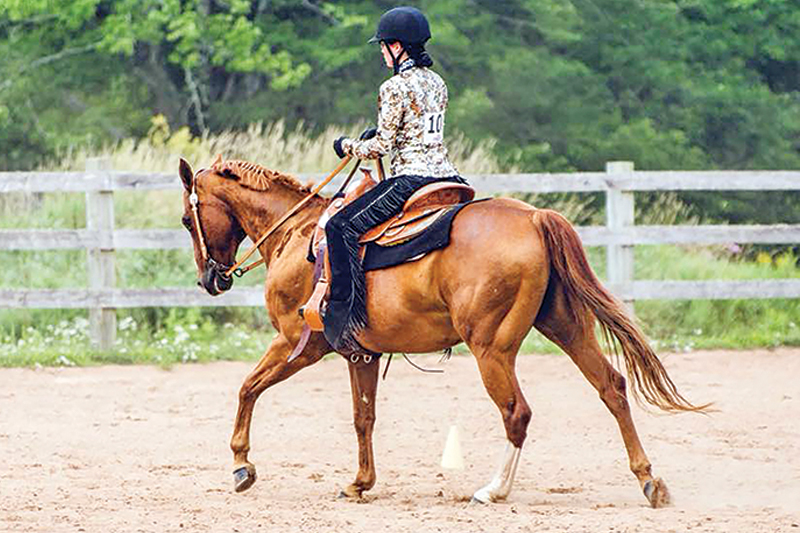
4-H ambassador, Nicole Martin, riding her horse Goodbye Quixote at a 4-H show in Nova Scotia. Photo courtesy of Nicole Martin
Many projects are available for horse members, and they are provided with supplementary project books and additional information specific to each project. A project doesn’t have to be finished in one year, but the requirements of each project are to complete the record book, stay active with the club, and take part in the club’s communication activities and Achievement Day.
According to the 4-H Horse Reference Manual published by the 4-H Branch of Alberta Agriculture and Forestry, a horse project may involve English or Western riding disciplines. English riding projects may include horsemanship, dressage and jumping. Western riding projects may include horsemanship, ranch horse, rodeo, pack horse, reining, and cattle events.
Members interested in the Young Horse Project focus their project on raising and training a young horse, and choose from two participation streams. One gives members an option to complete a project on their own on a self-directed basis; the second option gives members a chance to link with an industry-based young horse development project. Members must be 12 years of age and must have completed Horsemanship Levels 1– 3 before registering in these projects.
The manual describes a Standardbred Young Horse Project, under which a member may receive a Standardbred weanling from a breeder, work through the care and development of the young horse, and prepare it for sale for the owner at the annual yearling sale. The Performance Standardbred project calls for the member to take an off-the-track racehorse such as a Standardbred and train the horse for riding. The member then assists in the marketing of the horse for sale. Other horse projects include Junior Horse, Green Horse, and Judging Horse activities. The comprehensive, almost 300-page manual offers enormous scope and guidance for any member focused on an equine activity. All the horse activities require members to record everything they do to accomplish their goals while continuing to be active in the core commitments and activities of the club.
“We have a coast-to-coast survey right now,” says Benner. “Generally, what we have heard from alumni of the program is that they are very aware of the impact it has had on them. Folks I meet in the business sector and other industries often tell me about the public speaking and the presentation skills, the showmanship, and the competition part that help them in their careers. The number one thing people tell me about is the communication skills: the ability to present something, show an animal, ride a horse, and how to walk into a board room and talk about something. That comes back to self-confidence and self-esteem. Those leadership skills resonate strongly.
“There was some research done in the 1990s, and it found that 4-H members were six times more likely to pursue a post-secondary education, so we are researching that now to have current information. But we do know that about one in four young people come out of the program with a scholarship. The old school view of 4-H is cows and cooking and living on a farm. But it’s not that at all. Our job is to tell young people how relevant 4-H is today, and that the brand is much more than that.”

Participants in Horsemanship at a 4-H Manitoba Rally Day. 4-H has more than 100 years of history in Manitoba, the province recognized as the birthplace of 4-H in Canada. Photo courtesy of Candace Tolton
While some clubs may be holding their own in terms of membership numbers, some are experiencing a drop. Benner says that parents today have many pressures on their time. With two or three children, they may all be in different sports and after-school activities that require travel, time commitments, and expenses for equipment. But despite that, she believes that 4-H is a complement, not a competition, to all those other activities.
“I don’t think of 4-H as competition with other programs,” she says. “If you put them all together, we are still not scratching the surface with helping young people in Canada. There are still a lot more people out there to be reached, especially in 4-H. There are a lot of young people in rural communities we could be engaging and helping. As a youth organization, we tend to work a lot together and it’s really about making sure young people are all thriving — not just surviving.”
Looking to the future, the most important thing is to stay relevant for young people. Children today have to navigate a very different world from the one their parents experienced growing up. 4-H needs to stay on top of its game to remain relevant. It’s not only their biggest challenge; it’s their biggest opportunity.
For instance, Discover Science is 4-H Canada’s newest club-level initiative, helping members explore STEM streams. This year, Discover Science has focused on computer science to show members how they can use code, both personally and as a way of understanding the computer world around them.
“At a national level, members can participate in a 4-H Canada science fair as a young person and we have a direct stream into the Canada-wide science fair,” says Benner. “We are winners at the national science fair; there is a member from BC who has won it. She met the Prime Minister and went on to global science fairs. It’s a huge opportunity, especially for young women looking for career opportunities out there. We have a lot invested in thoroughly training leaders on how to work with young people in science and technology, and also programming opportunities for them to be doing science projects. They can also do science club kits where they can learn how to code, and it doesn’t matter where they are or what their school offering is. They can do it in a hands-on way in their community. They can request a science club kit and work with their club. Science is in everything, including working with animals in equestrian science, etc.”
Helping their members and finding the funds to keep pushing forward was made a little easier recently. Farm Credit Canada 4-H Club Fund has contributed $100,000 in grants for the 2020 year to 206 clubs, districts, and regions across Canada.
“By supporting 4-H clubs across Canada, the FCC 4-H Club Fund is helping pave the way for young people to pursue any number of careers in Canadian agriculture, if that’s where their dreams take them,” says Tod Klink, executive vice president and chief marketing office at FCC. “Through local 4-H clubs, young people are given the opportunity to learn practical skills through hands-on experience, as well as develop the leadership skills and values that will open up opportunities in the agriculture, food, agribusiness industries, and beyond.”
In May 2019, the Hon. Marie-Claude Bibeau, Minister of Agriculture and Agri-Food Canada, announced an investment of up to $3 million for the development and delivery of 4-H programs and initiatives across Canada over the following three years. The ministry has had a long-standing partnership with 4-H Canada to support the development of Canada’s youth leaders in mainly rural and agricultural communities.
4-H enjoys contributions and partnerships with a wide variety of national sponsors including financial institutions, foundations and corporations. The partnerships give the organization the opportunity to continue to develop and administer programs that develop today’s youth into tomorrow’s leaders, no matter what career path they choose.
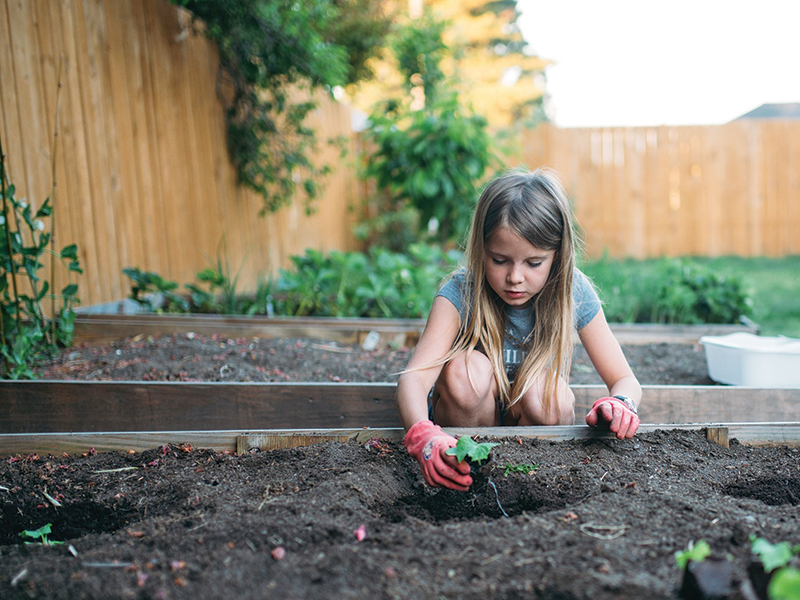
Photo courtesy of 4-H Canada
Niblock believes that 4-H is a fantastic program for youth regardless of their goals and endeavours. “It teaches so much about leadership, teamwork, responsibility,” she says. “There is the opportunity for real personal growth.”
In Manitoba, where it all began, Tolton says that 4-H has given so many members life skills that make the transition into adulthood easier and more successful.
“4-H builds confident and capable youth who excel in the world they live in,” she says. “We cannot build the future for our youth, but we can build our youth for the future. That is what 4-H is all about. Our youth are tomorrow’s leaders.”
For more information on 4-H and how to join, visit www.4-h-canada.ca. The website provides a list of the 4-H associations in each province and their contact information.
Main Photo courtesy of Angela Masters



